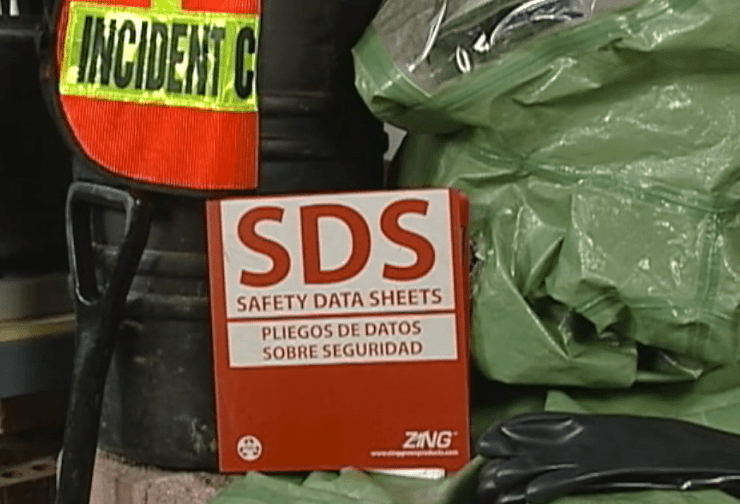Safety data sheets (SDSs) are a critical component of a successful Hazardous Waste Operations and Emergency Response (HAZWOPER) program. SDSs provide important information about the properties and hazards of hazardous substances, as well as how to safely handle and store them. In this article, we’ll provide an overview of SDSs and offer some helpful tips for businesses looking to implement them in a HAZWOPER environment.
What are Safety Data Sheets?
Safety data sheets (SDSs) are documents that provide information about the properties and hazards of hazardous substances, as well as how to safely handle and store them. SDSs are required by law in many countries and are intended to protect workers and the general public from potential hazards.
SDSs typically include information about the chemical identity of the substance, its physical and chemical properties, hazards, and how to safely handle and store it. They may also include information about the potential health effects of the substance and emergency response procedures.
Why are Safety Data Sheets Important in HAZWOPER Environments?
Safety data sheets are important in HAZWOPER environments because they provide important information about the properties and hazards of hazardous substances, as well as how to safely handle and store them. This information is critical for protecting workers and the general public from potential hazards.
In addition, SDSs are often required by law or regulatory agencies, such as the Occupational Safety and Health Administration (OSHA), as a means of ensuring the safety of workers and the general public.
Tips for Implementing Safety Data Sheets in HAZWOPER Environments
Here are 10 tips to help your business implement effective safety data sheets in a HAZWOPER environment:
- Identify all hazardous substances: Make a list of all hazardous substances used or stored at your facility and gather the relevant SDSs for each.
- Make SDSs easily accessible: Ensure that SDSs are easily accessible to workers and are stored in a central location.
- Train employees on how to use SDSs: Proper training is crucial to ensure that employees know how to use SDSs properly and understand the information they contain.
- Update SDSs as needed: Regularly review and update SDSs to ensure they are accurate and up-to-date.
- Follow established protocols: Follow established protocols for handling and storing hazardous substances based on the information provided in the SDSs.
- Keep thorough records: Maintain records of all SDS usage and maintenance activities.
- Review and update the program as needed: Periodically review and update your SDS program to ensure it is still effective and in compliance with any changes in relevant laws and regulations.
- Involve employees in the process: Involving employees in reviewing and updating SDSs can help ensure their buy-in and support for the program.
- Consult with experts: If you are unsure how to properly use SDSs or have questions about the information they contain, consider consulting with experts or regulatory agencies for guidance.
- Use SDSs in conjunction with other HAZWOPER resources: SDSs are just one part of a comprehensive HAZWOPER program. Other key elements include personal protective equipment, monitoring procedures and equipment, and emergency response planning. To ensure the safety of your workers and compliance with regulatory requirements, it’s important to have a well-rounded program that addresses all of these areas.
Conclusion
Safety data sheets are a critical component of a successful HAZWOPER program for businesses that deal with hazardous substances or conditions. By following the tips outlined above, you can help ensure the safety of your workers and protect your business from potential legal and financial liabilities. It’s worth noting that SDSs are just one part of a successful HAZWOPER program. Other key elements include personal protective equipment, monitoring procedures and equipment, and emergency response planning. To ensure the safety of your workers and compliance with regulatory requirements, it’s important to have a well-rounded program that addresses all of these areas.
Do you need HAZWOPER Online Training?
Try a free demonstration of Safety Data Sheets in HAZWOPER Environments
Excerpt from the Outline of our Understand HAZWOPER Online Training Course
The following outline summarizes the major points of information presented in the program. The outline can be used to review the program before conducting a classroom session, as well as in preparing to lead a class discussion about the program.
There are many types of potentially hazardous chemicals… flammables, corrosives, irritants, sensitizers, poisons… even carcinogens (which can cause cancer).
— Each individual chemical product has its own set of hazards, required safety precautions and recommended emergency procedures.
So, how can we work with hazardous chemicals safely?
— How should we handle and store them?
— What personal protective equipment should we use?
— What should we do in an emergency?
Fortunately, the answers to these questions can be found on a hazardous chemical’s “SDS”…its “Safety Data Sheet.”
The SDS is the most valuable tool we have for identifying and dealing with the hazards presented by a chemical.
— But like any other tool, we need to understand what it’s designed to accomplish… and know how to use it properly.
In 1983, OSHA instituted the Hazard Communication Standard.
— Its purpose is to ensure that workers have access to the information and equipment they need to work safely with hazardous chemicals.
The Standard requires chemical manufacturers and importers to give their customers Safety Data Sheets for any potentially hazardous products that they supply.
— In turn, employers are required to give their employees’ access to SDS’s for the hazardous materials that are present in their workplace.
Originally, OSHA allowed manufacturers to provide hazard information in any format they wanted.
— But with the adoption of the “Globally Harmonized System” (“GHS” for short), the information in an SDS must now appear in a specified order.
— This makes it easier for people to find what they are looking for, which is especially valuable in an emergency situation.
Another goal of the Globally Harmonized System is to make Safety Data Sheets as easy to read as possible. The new format does this by presenting information in an “as needed” order:
— The chemical’s identity, its hazards and some emergency instructions are provided up front for quick and easy access.
— Basic safety information is presented next, in “easy-to-understand” language.
— Supporting technical data for health and safety professionals is provided later in the SDS.
Safety Data Sheets are designed to answer four basic questions that anyone who encounters a chemical might have:
— “What is the material and what are its hazards?”
— “What should I do if a problem occurs when I’m working with this material?”
— “What precautions should I take to prevent problems from occurring when I work with this material?”
— “Is there anything else I should know about this material?”
Each of the questions you will have when you are working with a chemical is “answered” by one or more sections of the Safety Data Sheet. For example, Sections 1, 2, and 3 provide answers to the first question:
— “What is the material and what are its hazards?”
“Section 1” of the SDS identifies the material, using the standard GHS “Product Identifier”.
— You’ll find this Product Identifier on the chemical’s container label as well.
“Section 1” also lists the name, address, and telephone number of the chemical’s manufacturer, importer or distributor.
— This is provided in case you have questions about the SDS or the material itself.
— An emergency telephone number may also be listed for quick access to needed information.
“Section 2” of the SDS describes the hazards that are associated with the chemical, including the information that’s provided on the chemical’s label, such as:
— The Signal Word.
— “Hazard Statements”.
— “Precautionary Statements”.
— It may also contain copies of the GHS pictograms that appear on the label.
“Section 3” discusses the ingredients in the chemical and its composition. It also provides additional “identifying” information such as the material’s:
— Chemical identity.
— Its “common name”.
— CAS and EC numbers.
So as you can see, once you’ve reviewed Sections 1, 2, and 3 of an SDS you’ve answered the first of our basic questions:
— “What is the material and what are its hazards?”
The next important question that a Safety Data Sheet answers is… “What should I do if a problem occurs when I’m working with this material?”
— Sections 4, 5 and 6 provide this information.
“Section 4” of the SDS outlines the basic First Aid Measures that an untrained individual should use before professional medical assistance is available.










